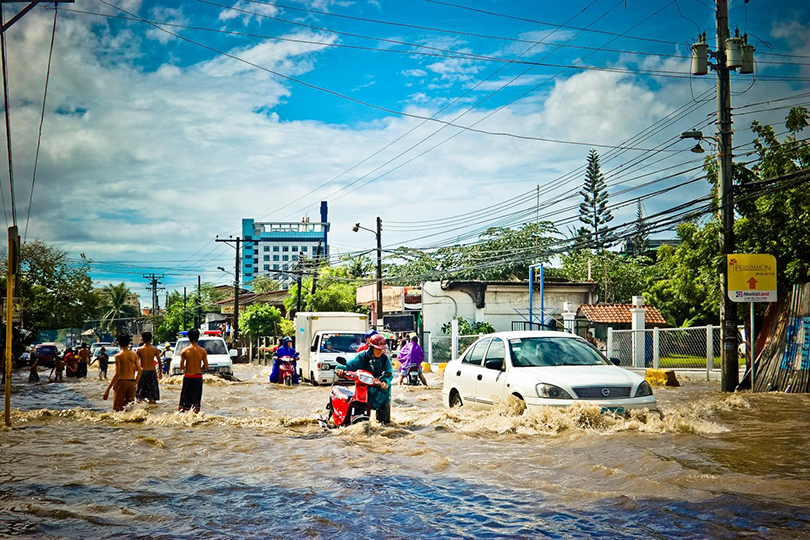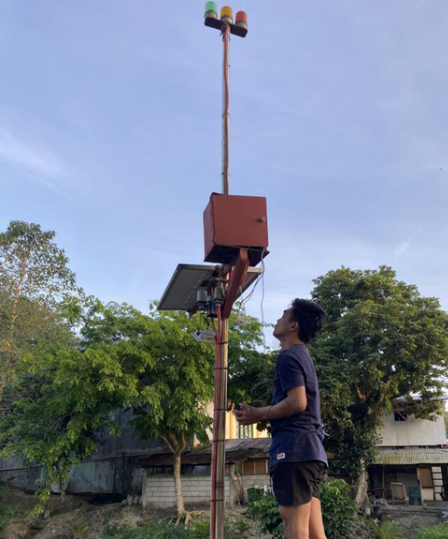CSS Designs, Builds & Deploys New Flood Alert System in the Philippines
ON 07/31/2024 AT 08 : 47 AM

According to official records, flooding from typhoons, monsoons, and rainstorms is the type of natural disaster responsible for the most deaths and injuries in the Philippines, year after year.
During Christmas weekend in 2022, for example, just one storm in the province of Northern Mindanao experienced rainfall so dramatic that in just a few days over 51 people were killed from the rushing waters. Thousands of people were rushed to emergency shelters to avoid further risk from harm, because their own homes became uninhabitable from the storm, and a total of over 4,500 homes were ripped apart as rivers and streams crested and became flash floods.
This is a scenario which unfortunately repeats itself in the Philippines for over half the year, every year, eventually stranding hundreds of thousands and killing increasing numbers as the storms which cross the Philippine archipelago grow in numbers and intensity, as the climate crisis heats up.
While most of those floods are currently unavoidable, the deaths and injuries from them could be greatly reduced if effective early warning systems were in place in enough locations, and a means to transmit those warnings to wide numbers of people were also available, year-round.
To address this problem, Climate Survival Solutions (CSS) engineers developed a unique river level monitoring system to keep track of water levels as they begin to rise in the face of extreme weather.
The system, currently in prototype form but about to be upgraded for a larger-scale test rollout, consists of three main modules.
The first is what is referred to as the “forward” node. This is the module which currently includes the water sensor subassembly for embedding alongside riverbeds. It is designed to remain operational despite exposure to high winds, heat, humidity, and potential collision with moving rocks and the floodwaters themselves. As configured in the current test system, the sensors are designed to trigger a warning signal when river waters rise to more than 2 meters above normal levels.
The forward node is also able to incorporate multiple sensors beyond just ones for water level detection and will be the foundation for a multi-hazard early warning system.
Besides reporting the raw data from the forward node to networks, this module’s design is easily upgraded to perform calculations and artificial intelligence enabled interpolations of the data, to more accurately project how severe potential floods may be. The nodes also can be interconnected via an external network to communicate how floods might spread across a region and at what rate of speed.

A second key part of the flood detection system the team has put together is the repeater node. This unit is separate from the embedded flood sensor forward node and has as its sole functions to scan for data provided from the forward node, then to amplify and rebroadcast it to locations where the data can be interpreted and converted into actual broadcast warning systems.
In the Philippines, this would include interconnection with the Philippine Atmospheric, Geophysical and Astronomical Services Administration (PAGASA), which also happens to be the nation’s National Meteorological and Hydrological Services (NMHS) agency. NMHS is responsible for monitoring and protecting people from harm from natural disasters of all kinds, whether from flood, typhoons, volcanoes, earthquakes, and more.
The third main part of the CSS solution for early flood detection is its controller subsystem. The controller’s primary role is to receive all data from the forward node either by direct connection, or via the repeater subsystem. As currently designed, the main purpose of the controller is to display the data and to publish it using Climate Survival Solutions' SENVIUTM visualization & processing software.
All modules are built with battery systems which are connected to solar panels, so they are not dependent on the existing power grid. The communications systems used to transmit the data from the repeater will also be installed so they can ensure ongoing communications even if conventional telecom and other wireless networks are no longer operational, as can happen in some of the worst natural disasters afflicting the country.
The current solution is undergoing extensive testintg in a real-world environment in the province of Northern Samar in the Philippines. The installation, conducted in partnership with officials from the province, provides real-world detection on a river spanning approximately 10 meters in width, and triggers a warning when rainfall and storms cause the river level to move upwards by 2 meters above nominal levels.
The engineering team is currently engaged in adding new sensors and computational technology in the forward node described here, to add features to make them even more effective at letting people know as early as possible when rising waters could become life-threatening.
For further information about this solution, please contact Climate Survival Solutions here.
